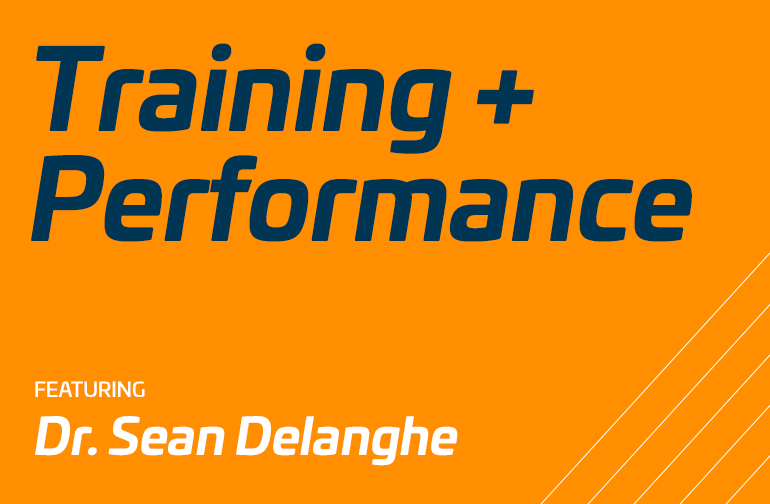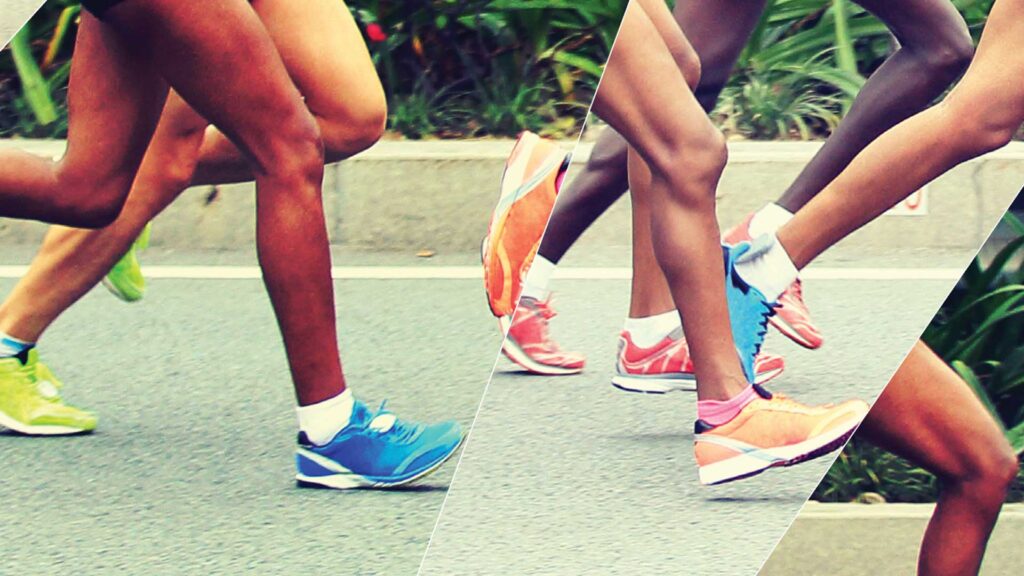When you are months out from race day, there are numerous things you can do to get faster. For instance, (surprise) you could run more! However, when you’re within days of your important race, the physiology you have laid down for yourself is already set. The money is in the bank, the hay is in  the barn and the clichés go on…
the barn and the clichés go on…
Sometimes the hardest thing to do for runners who are driven by their routine and work ethic is to accept that less is more in the days leading into an A-race. To help minimize the anxiety of not running, I always think it’s valuable to focus on doing the things you can control that will help you be faster on race day. One of these controllable variables involves priming the mind to deal with pain.
Overcoming Pain
There is no doubt that when we run, the pain we feel slows us down. Even when we run at our perceived max effort, our central nervous system is being bombarded with an array of signals (such as a rising core temperature, lactic acid accumulation and neuromuscular fatigue) that make our brain slow us down well before we actually have to. I have written about this subject in the past, and how pain plays an important role in dictating our performance.
Something that I have always found to help me process pain while I race and to push my limit is reminding myself of a few key pain perception facts (which you can read about in more detail with references HERE). Some of my favourites include:
• Pain is processed in the limbic system- the part of our brain that also processes emotions. If that centre is stressed and overwhelmed, we feel more pain. When we’re relaxed, we feel less pain.
• Pain tolerance can be learned. If you observe somebody with amazing pain tolerance, for instance, researchers have shown that yours will improve too!
• Distraction is a strong form of pain control. If you find a way to think about something else, the pain goes down.
• Athletes in general have better pain tolerance than non-athletes. It’s not that they feel less pain than the general population, but that they simply deal with it better.
• Athletes who most successfully deal with pain view it as a positive form of effort, rather than a detrimental sensation.
When I review facts like this, it helps to remind me that racing should hurt, running at my best will hurt, and that getting into a frame of mind where those sensations are welcomed is a great practice in the days leading up to a race.
While reviewing this literature, I typically see this higher level of performance as simply being a result of tolerating more pain which allows for increased energy expenditure. However, researchers now understand that changing one’s focus can not only allow one to push harder (i.e. consume more oxygen), but it may also give us a boost in running economy (i.e. use the oxygen you’re taking in more efficiently). That’s where the next study comes along.
STUDY: Distraction and Running Economy
In this study published in 2016, the researchers looked at beginner runners who ran 4×6 minutes at a given pace while being provided with different attention instructions (breathing, body movement, watching a video, or a control where they could think about whatever they wanted). During each trial, they measured oxygen consumption. This is what they found:

The x-axis is the time of the run, while the y-axis is a measure of oxygen consumption. As you can see, the triangle line (video) is lower than the other lines. What this shows is that at a given pace, if you direct your attention externally (aka on a video rather than on how much your legs hurt), there is a good chance you are going to run at the same pace using less oxygen!
Practical Applications
Anytime there is a study like this, we always have to be careful in extrapolating the results to real-life situations. This study proves exactly what it’s supposed to (not more): what happens to running economy in beginner runners over the course of a 6 minute run when watching a video compared to the other 3 trials. However, this study does not prove it’s never a good idea to focus on your body, breathing rate or let your mind wonder.
One key takeaway from this study that I intend to use in my upcoming races jives well with what researchers know about pain. When we run, pain is telling our CNS to slow us down. If we can find ways to ignore and blunt that message (i.e. by directing our attention externally), then there is no doubt that we will be able to go just a little faster. A study like this suggests that not only will we be going faster as a result of being able to exert more energy, but we may run more efficiently!
So, if you are a few days from race day, and looking for ways to improve, work on priming your mind to handle pain more effectively. Visualize scenarios late in your race where your lungs and quads are screaming at you to slow down, and then use this research to remind yourself to take in your surroundings. Visualize focusing on the athletes around you, the crowd cheering or even a landmark such as a sign up the road. These strategies, when implemented at the right time, will force your limbic system to do a slightly less effective job of a job telling your body to slow down!



